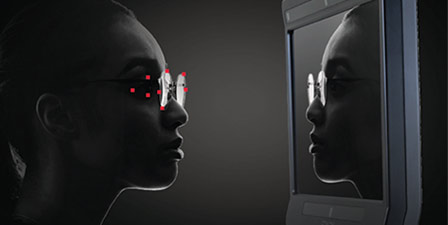
In a recent visit with my 91-year-old nonagenarian uncle, I was plied with numerous questions about cataract surgery. He has recently been told by his eye doctor that his time has finally come to have cataract surgery. I told him that based on what I read, he would see better than he has seen in years once his opaque brown lenses are replaced with clear intraocular lenses, and driving at night should improve since cataracts can cause glare and halos around the lights from oncoming cars. I told him it is reported to have a 98 percent or higher success rate, according to American Society of Cataract and Refractive Surgery (ASCRS) Statistics. But as I am calming his fears, I am thinking, he is 91 years old, and age-related macular degeneration (AMD) affects 1 in 5. (macularsociety.org) In some cases, dense cataracts can mask the symptoms of AMD. According to Chen Z, Zeng Y et al., in a meta-analysis of eight cohort studies on cataract surgery in AMD patients, the incidence of neovascular AMD within five years after cataract surgery was two to three times higher than that of nonsurgical patients (hazard ratio: 2.68). (ncbi.nlm.nih.gov/pmc/articles/PMC9646653)
Other studies link AMD to photooxidative damage to the macula from UV and violet/blue visible wavelength exposure. Remember the retina has been protected from these high energy wavelengths by the crystalline lens, but the removal of the cataract now allows some UV and the high energy visible wavelengths to transmit to the vulnerable aged retina. Sadly, I could not find many sources online recommending long-term sun protection for the eyes after cataract surgery. Most only recommend it short term to deal with the photosensitivity experienced after surgery or until the eye has healed. Most manufacturers of IOL claim 100 percent UV blocking but few list their reference wavelength for UV. Another study showed that some commonly used IOLs transmit some UV wavelengths between 350 to 375 nm (researchgate.net/publication/311552987). While UV damage is broadly noted as a cause of cataract, there is a dearth of information about long-term sun protection post cataract surgery. I was grateful to see the sound recommendations posted by Gregory H. Scimeca, MD. in an article titled “The Importance of Sunglasses After Cataract Surgery” (bceye.com/importance-of-sunglasses-after-cataract-surgery) that I will be forwarding to my uncle.
Additionally, there are reported protective benefits of taking antioxidants based on the AREDS study which states: “Of note, implantation of UV-only filtering IOLs at the time of cataract surgery in 1,167 of 4,577 AREDS participants with intermediate age-related macular degeneration (AMD), in the context of 6 monthly retinal reviews and follow-up of at least 5 years, was not associated with progression to advanced AMD.” This seems to support the effect of retinal antioxidants in slowing the progression of AMD.
There is no doubt that the satisfaction rate is exceedingly high for cataract surgery, after all their world can be seen clearly and in true color for the first time in years. However, patients, especially those at elevated risk of developing or accelerating potentially blinding disorders like macular degeneration due to health or age, should be advised by their eye doctor to take precautions in terms of ocular sun protection and diligent monitoring of retinal health post cataract surgery.
• Deborah Kotob
Pro to Pro Director
[email protected]












